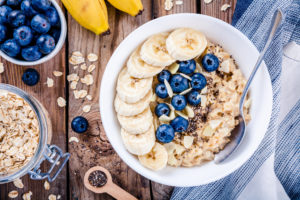 According to two studies published in The BMJ today, higher consumption of fruit, vegetables, and whole-grain foods are associated with a lower risk of developing type 2 diabetes. This research suggests that even a modest increase in consumption of these foods could help to prevent type 2 diabetes.
According to two studies published in The BMJ today, higher consumption of fruit, vegetables, and whole-grain foods are associated with a lower risk of developing type 2 diabetes. This research suggests that even a modest increase in consumption of these foods could help to prevent type 2 diabetes.
For the first study, a team of European researchers examined the association between blood levels of vitamin C and carotenoids, which are the pigments found in colorful fruits and vegetables. The study looked at vitamin C and carotenoid levels as they are more reliable indicators of fruit and vegetable intake rather than using dietary questionnaires.
Advertisement
The study included 9,754 participants who developed new-onset type 2 diabetes and a comparison group of 13,662 adults who had no diabetes. All participants were taking part in the European Prospective Investigation into Cancer and Nutrition (EPIC)-InterAct study in eight European countries.
Researchers concluded that after adjusting for lifestyle, social, and dietary risk factors, higher blood levels of vitamin C and carotenoids when combined into a “composite biomarker score” were associated with a lower risk of developing type 2 diabetes. It was calculated that every 66 grams per day increase in total fruit and vegetable intake was associated with a 25% lower risk of developing type 2 diabetes.
The Second Study
For the second study, researchers examined associations between total and individual whole-grain food intake and type 2 diabetes. Participants included 159,259 women and 36,525 men who were free from diabetes, heart disease, and cancer. They were all taking part in the Nurses’ Health Study, Nurses’ Health Study II, and Health Professionals Follow-Up Study.
It was found that participants in the highest category for total whole grain consumption had a 29% lower rate of type 2 diabetes compared with those in the lowest category. For individual whole-grain foods, one or more servings a day of whole-grain cold breakfast cereal or dark bread was associated with a lower risk of type 2 diabetes. This was compared with consuming less than one serving a month.
Researchers have found that for other individual whole grains, consumption of two or more servings a week compared with less than one serving a month was associated with a 21% lower risk for oatmeal, a 15% lower risk for added bran, and a 12% lower risk for brown rice and wheat germ. These findings seemed to plateau at around two servings a day for total whole grain intake and at around half a serving a day for whole-grain cold breakfast cereal and dark bread.
Research teams hope both of these studies help to provide further support for current recommendations to increase fruit, vegetable, and whole-grain consumption as part of a healthy diet to prevent type 2 diabetes. Simple lifestyle changes, such as changing a diet, is the best way to manage and lower the risk of diabetes.
